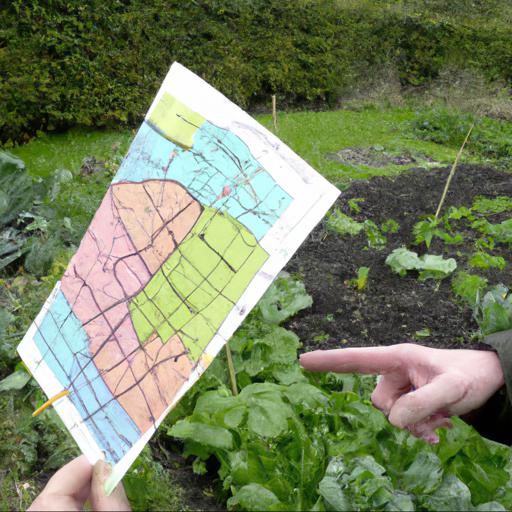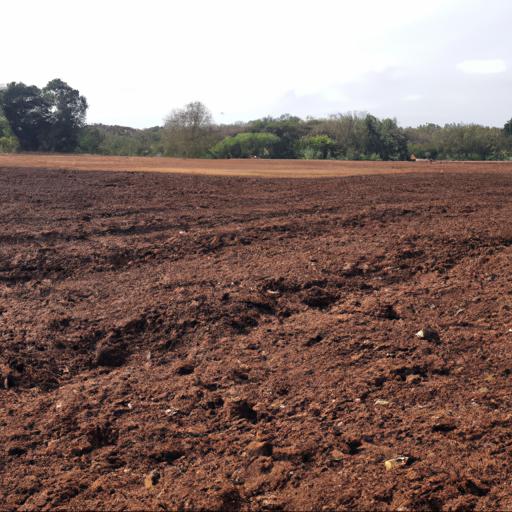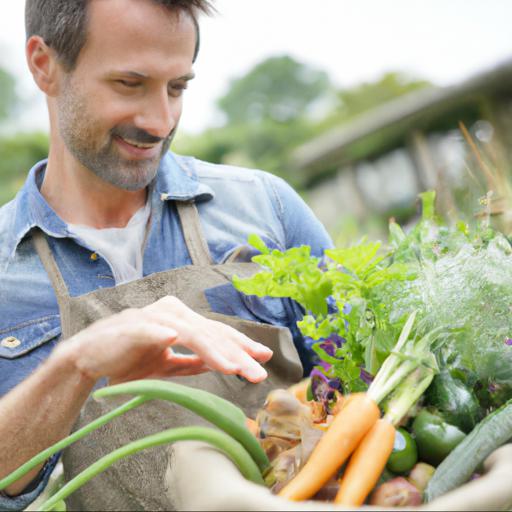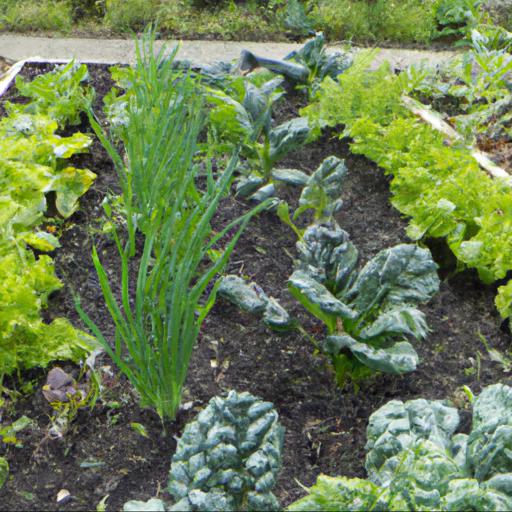Are you looking for tips to create a low-maintenance veg plot? With the right planning and maintenance, you can have a thriving vegetable garden that requires minimal effort. Here are some tips to help you get started.
From choosing the right location to selecting the right crops, these tips will help you create a low-maintenance veg plot that produces plenty of delicious vegetables.
Choosing the right location for your veg plot

When it comes to creating a vegetable plot, there are a number of things to consider, such as which vegetables to plant, when to plant them, and most importantly, where to locate the plot. Choosing the right location for your vegetable patch is key to creating a low-maintenance veg plot that produces fresh, tasty fruits and veggies throughout the year.
The best locations for a vegetable plot depend on sunlight, water and soil conditions, so it’s important to consider these factors carefully. A sunny spot is essential for most vegetables and will give the best yields, so plan your garden in a place that receives at least 6-8 hours of sunlight a day. Choose a spot away from tall trees or buildings that shade the garden, as this will reduce the amount of sun the vegetables can get.
A raised bed or container can help bring the vegetables closer to the sun. Water is another essential factor for a successful vegetable garden. If possible, you should try to site the garden close to a source of water, such as a tap, so that it is easy to water regularly.
If necessary, a water butt can be installed to collect rainwater. Soil conditions must also be taken into consideration when selecting the location.
Ideally, the soil should be well-draining, rich in organic matter and have a neutral pH. If not, you can build a raised bed filled with fresh soil, compost and manure.
Once you’ve chosen the perfect location for your vegetable plot, you can start planting! Having a proper spot for your vegetable garden will help ensure that it is easy to maintain and produces delicious crops.
Preparing the soil for planting

When it comes to getting your vegetable patch looking its best, it can be quite a daunting task. With the right tips and tricks however, gardening for optimal plant health can be a breeze. Whether you’re looking for a low-maintenance veg plot or one that offers better yields and is easy to manage, this guide will have you preparing the soil for planting in no time.
When it comes to preparing the soil, there are several key elements to consider. Firstly, it’s important to make sure the soil is properly aerated to ensure the plants are able to root and benefit from the full range of nutrients in the soil.
Large clods can be broken up by hand and small amounts of organic matter such as compost or manure can be added to ensure your soil has all the nutrients the plants need. The next step is to test the pH level and determine if any nutrients need to be added.
If you find the soil is too acidic then adding lime can help to bring up the pH level. If the soil is too alkaline then adding sulphur can be beneficial. Once this is complete, you can start adding organic mulch and soil amendments to nourish the soil and attract beneficial organisms like earthworms that help to keep the soil healthy.
When you’re ready to start planting, make sure all the soil amendments are mixed in well and the area is well weeded. Then, depending on the size of the plot, you might want to use raised beds or garden planters, which will reduce your workload and make it easier to maintain the soil. As long as you’re careful to replenish your soil on a regular basis with organic matter, you should have a low-maintenance veg plot that will yield a bountiful harvest.
Selecting the right vegetables for your plot

Vegetable gardening is a rewarding hobby, but it requires a bit of know-how. If you’re looking to create a low-maintenance veg plot, it’s important to select the right crops so that you can enjoy the rewards of the harvest without excessive effort. Here are some tips for selecting the right vegetables for your plot.
First and foremost, be sure to check your growing zone to determine what crops thrive in your area. Of course, it’s also wise to read up on the individual vegetable varieties to find out how easily they can be cultivated.
Certain varieties with shorter lifespans are ideal for low-maintenance growing – for example, sweet potatoes require about 90 days, compared to the 150 days that some other vegetables may require. When you’re thinking about yield, it’s a good idea to plant vegetables that bear heavily, such as squash and watermelons. These plants will give you bumper crops with minimal effort, so you can rest assured that the project will be worth the effort.
Finally, pay attention to the shape and texture of the vegetables. If space is limited, opt for varieties that won’t outgrow the plot space, such as bush and dwarf varieties.
And remember to rotate your crops each season in order to prevent disease and boost soil fertility. By using these simple tips, you can create a low-maintenance veg plot that will provide plenty of freshly picked crops for years to come.
Happy harvesting!
Tips for keeping your veg plot low-maintenance
Having a veg plot in the garden can be a great way to get access to delicious home-grown vegetables, however it can require a lot of ongoing effort to keep it looking good and productive. But it doesn’t have to be a chore.
Here are a few simple tips to keep your veg plot low-maintenance and still bountiful. Firstly, it’s important to plan ahead and make sure you choose the right veg for both the space you have and the season you’re planting in. Opt for quick turnaround veg like radishes or courgettes if you’re short on time or space.
Planting in succession from late spring through to early autumn will also get your veg patch pleasantly productive all summer long. Always make sure you understand your soil and its particular needs, as most vegetables are best suited to specific nutrients and soil types, so you can tailor your veg selection accordingly. If you’re short on time then opt for no-dig methods eliminating tilling and double-digging as it saves lots of effort over a season.
Mulching and cover-cropping can also work wonders to minimise weeds in the veg plot, while also improving soil fertility. Finally, be mindful of pests and diseases, as they can have a huge impact on the health and growth of the plants in your veg plot.
Encouraging beneficial insects like ladybirds to your garden through careful plant selection will help keep bad bugs away, while crop rotation between your veg’s can help to prevent the spread of diseases. Regularly checking for pests, diseases and nutrient deficiencies will help minimise losses and keep your veg plot healthy and productive.
By following these simple tips, you’ll be able to keep your veg plot low-maintenance, healthy, and still enjoy the rewards of home-grown veg. So get planning and planting, and soon enough you’ll be able to feast on a luscious harvest of summer veg.
Bottom Line
This article provides tips for creating a low-maintenance vegetable plot. It covers choosing the right vegetables, using raised beds, mulching, and planting in succession.
It also suggests using companion planting, crop rotation, and cover crops to reduce the need for weeding and pest control. With these tips, you can enjoy a bountiful harvest with minimal effort.
FAQ
What are the best vegetables to grow in a low-maintenance veg plot?
The best vegetables to grow in a low-maintenance veg plot are root vegetables such as carrots, potatoes, and beets; leafy greens such as lettuce, spinach, and kale; and vining vegetables such as squash, cucumbers, and tomatoes.
What are the benefits of having a low-maintenance veg plot?
The benefits of having a low-maintenance veg plot include less time spent on weeding, watering, and fertilizing; less need for pest control; and increased yields due to better soil health. Additionally, a low-maintenance veg plot can help conserve water and reduce the amount of chemicals used in the garden.
What are some tips for keeping a low-maintenance veg plot?
Some tips for keeping a low-maintenance veg plot include: 1. Planting in raised beds to reduce weeding and improve drainage. 2. Choosing hardy, disease-resistant varieties of vegetables. 3. Mulching the soil to reduce weeds and retain moisture. 4. Watering deeply and infrequently. 5. Using companion planting to naturally repel pests. 6. Using organic fertilizers and compost to improve soil fertility. 7. Rotating crops to reduce the risk of disease and pests. 8. Removing spent plants and weeds promptly.
How often should a low-maintenance veg plot be watered?
Low-maintenance veg plots should be watered once or twice a week, depending on the weather and soil conditions.
What are some common mistakes to avoid when creating a low-maintenance veg plot?
Some common mistakes to avoid when creating a low-maintenance veg plot include over-planting, planting in the wrong location, not using mulch or compost, not watering enough, and not rotating crops.
What are some tips for harvesting vegetables from a low-maintenance veg plot?
1. Water the vegetables regularly to ensure they are adequately hydrated. 2. Harvest vegetables when they are at their peak ripeness. 3. Use sharp tools to ensure a clean cut when harvesting. 4. Remove any weeds or debris from the plot before harvesting. 5. Use mulch to help retain moisture and keep weeds away. 6. Rotate crops to ensure adequate nutrient availability. 7. Harvest vegetables early in the morning when they are at their freshest. 8. Use companion planting to help deter pests and diseases.

